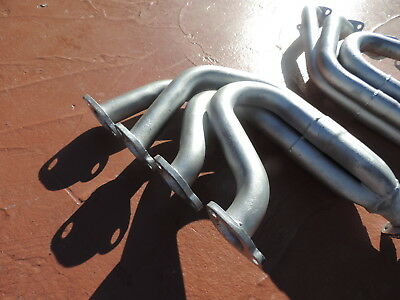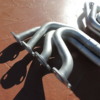My plan was to get it running and then slowly freshen up the car one system at a time instead of doing the complete teardown and not driving the car for a year or more.
I got it moving, then I had to deal with some stuck valves. Then I did a compression test with some cylinders being great and others being awful.
I did the rope in the cylinder trick, removed the springs, and spun the intake valves back and forth in their seats with a right angle drill.
When I was done, all but two of the cylinders were 155-165 psi on compression (dry), which I thought was pretty impressive under the circumstances. I was attempting a do-over on one of the low cylinders when I dropped one of the valve locks into the nether regions of my engine compartment (not the engine thankfully). I can't find it. I have run a magnet everywhere and blown compressed air all around as well. It must have fallen into a frame rail, be sitting in part of the engine mount, or I inadvertently kicked it across the garage. I even dropped the other half on purpose a bunch of times to try and see where it might have gone.
In searching for a replacement valve lock (located one that I can pick up in the morning) I discovered many tales of woe involving the stock valves.
My dad has 2 spare Cleveland blocks in his garage that came out of Mustangs headed for the crusher so I was willing to stick to my plan above and just run what I have until I got fairly strong evidence this morning that this is probably the original block. I don't have either motor or body tag, but apparently this car and others made around the same time never had them. My engine is stamped with a number that is 5 away from the number on a car that is 6 away from my VIN.
If I am keeping it under 6000 rpm and just driving back and forth to cars and coffee type stuff am I risking catastrophic block damage with those valves?
If it matters, I think I have closed chamber heads - 4 on the corner with the dot but the date code shows they were made in December of 1970.





